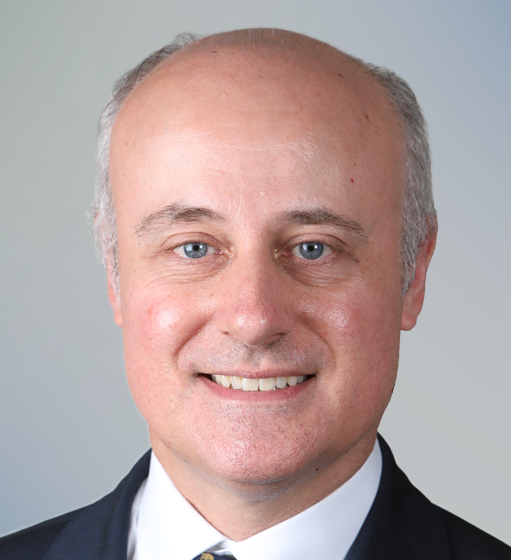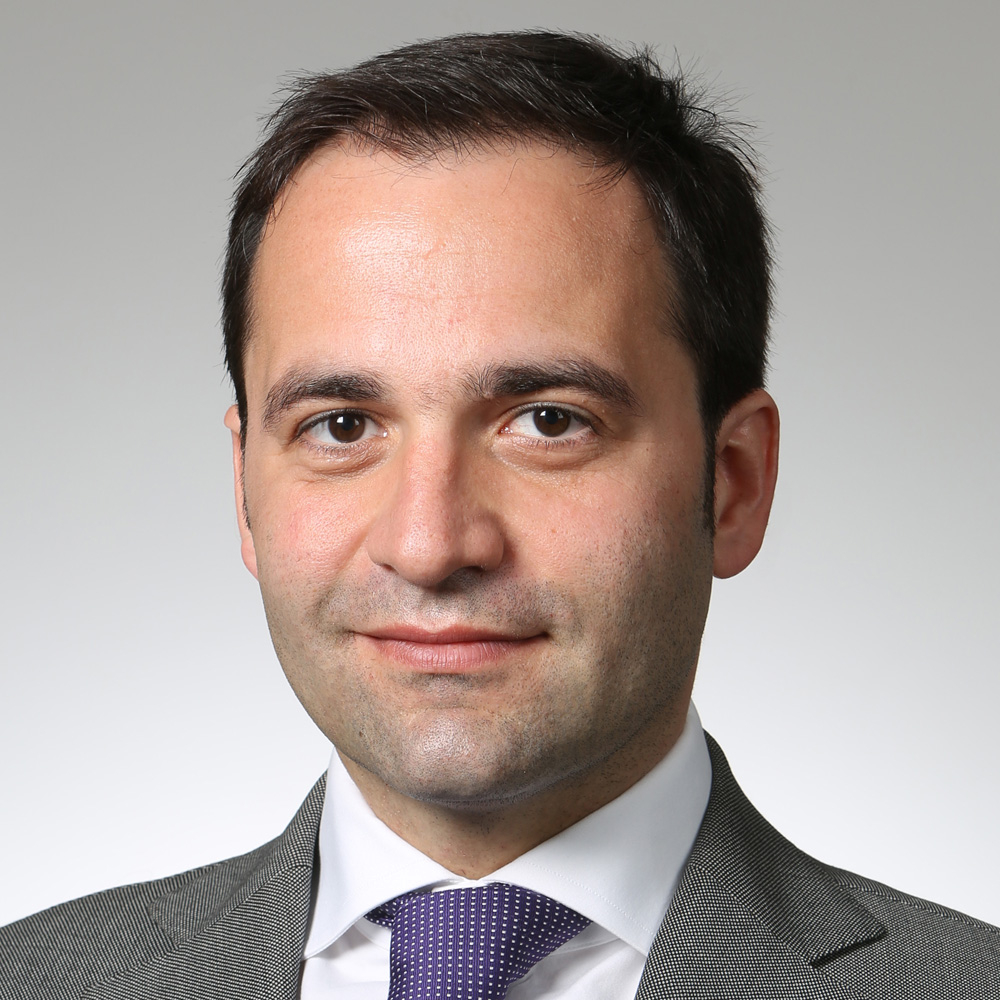Kalin Anev Janse in interview with Börsen-Zeitung (Germany)
Interview with Kalin Anev Janse, ESM Secretary General
Published in Börsen-Zeitung (Germany), 30 March 2019
Interviewer: Kai Johannsen
Original language: German
Börsen-Zeitung: Mr. Anev Janse, market participants and the general public know the ESM (European Stability Mechanism) and the EFSF (European Financial Stability Facility) as the Eurozone’s rescue institutions and as significant players in the context of euro denominated bonds in the SSA universe (supranational issuers, public authorities and agencies). To what extent does fintech play a role at the ESM and the EFSF? Is that a topic for you?
Kalin Anev Janse: Of course, fintech and more far-reaching financial innovation in the field of financial infrastructure are important topics for us. The reason is that capital market participants, the ongoing processes and particularly the bond universe are undergoing clear changes. Of course, as a public institution, we are not threatened in the same way as private market participants. If the latter are slow to react, they risk disappearing from the market. That is less likely for a public institution, but it is part of our mandate to offer an efficient service at the highest quality. Today, you can only reach that goal if you are actively looking and implementing fintech and financial transformation.
What does that mean concretely?
Fintech means in this context: innovation, automatisation and simplification of processes. We are trying to do that at the lowest possible cost for our shareholders, the euro area member states and their taxpayers. The public sector could and should be a role-model here. We can be a fintech innovator. We can work with start-ups. We can also develop new technological products and competencies ourselves. Financial innovation is not limited to fintech. Legaltech, regtech, risktech and other areas are part of what, individually and taken together, has a high digitalisation potential. This can and will make market institutions, private or public, more efficient, as long as they survive this process.
When did you start dealing with fintech and where does the ESM stand on this today? Do you have your own departments that are responsible for fintech and innovation?
We started more than five years ago. We were the first public institution that was part of a fintech circle in London. During this time, we dealt with more than 100 fintech firms. We wanted to find out where processes and models of the financial sector and financial markets had the potential to be redesigned or rebuilt in a totally new way. We also looked at so-called disruptive technologies. I am personally passionate about this field.
Is this also reflected in the IT?
Change in the area of finance is always also reflected in the technical requirements, in other words IT. We try to find synergies between the support of existing processes with IT and the innovation of processes through fintech and digitisation. It is our goal to improve and strengthen the way the ESM delivers its services while supporting its mandate. You might then ask, how do we organise “digital transformation and innovation” at the ESM. A group of interested and passionate colleagues has started an initiative called “ESM 4.0”. The name refers to “Industry 4.0”.
How many people are active in this area and what is their share in total staff?
Around 45 staff deal with this topic voluntarily. That is a significant part of our total staff of around 180. These colleagues work with fintech solutions across all business areas at the ESM and EFSF. We are very open to new technologies, we debate and evaluate new ideas to improve our processes and tasks. We invite start-ups to present us with new solutions. The “ESM 4.0” group is a voluntary initiative of colleagues that is getting increasing traction within the ESM. As a result, we achieve strong synergies from engagement with fintech of colleagues on the one hand and from their daily work in the organization, and management on the other hand. We are working in a very lively environment.
Do you have your own IT servers in Luxembourg?
At the ESM, we decided from the start to go for outsourcing solutions. That was simply the most efficient way. We were the first international financial institution that fully outsourced its front-office system. The same is true for our corporate IT. That was more than seven years ago. So we were the first public institution which fully outsourced its servers. We are using a combination of public and private cloud services. Some things happen in a public cloud, others in a private cloud. We are collaborating with software, platform and outsourcing services. That gives us many advantages and we are very happy with this approach.
Isn’t it very risky when the ESM and the EFSF are fully working in a cloud? Your data are very sensitive and very important for the entire Eurozone and for addresses outside of the Eurozone, of course.
We think that the leading cloud service providers have better expertise and more qualified resources than firms that offer in-house solutions. They also offer us protection against cyber-crime and cyber attacks. Also, we benefit from the scale advantages that the cloud service providers offer. As the ESM, we have a marked sense of responsibility to protect our processes and the reaching of goals that the member states have set for us. Of course, on top of that, we have our own protection system.
How do you assess the cyber risk?
We see cyber risk as one of the biggest risks for the financial industry and therefore also for us. We have introduced comprehensive protection measures against this. But as we are an institution of 180 staff, we cannot do everything ourselves. Therefore, it is important for us to find the right partners for outsourcing and then to work closely with them. This also applies to cyber risk assessment and quality control. We always try to find the best outsourcing suppliers. Among others, this includes the usage of Tier4 data centres that have the highest standards in terms of cyber security.
Has the ESM already been confronted with cyber attacks and if so, with what kind?
Yes. Unfortunately, that is part of the world we are living in today. The ESM is confronted with cyber attacks just as all other public institutions. These are first and foremost phishing attacks. We see criminals using fake emails. This is supposed to trick staff. There were attacks in which staff were led to believe that the mail came from the Managing Director, the boss of the ESM. The mail contained a request to transfer money. We are training our colleagues to spot such fraudulent attempts early on and alert us. The IT department is immediately informed and up to now, we have been able to avoid damage. We are continuously strengthening staff awareness regarding cyber risks.
You have developed your own IT application for the secondary markets for bonds. What is this tool able to do? What can you achieve using it? What are the main advantages?
A well-functioning and liquid bond market is extremely important for us, our bonds and our investors. We have developed an instrument to evaluate market data with the help of a tool called “Deep Data analytics”. It starts with data from the primary market and also comprises data on trades in the secondary market. The database contains more than one million data points. We trace every single trade of our bonds on the secondary market. This means more than 110 bonds and also all our bills, in other words, money market papers. That is a very big data set and it contains a lot of information that we analyse.
What are your take-aways from this?
For example, it allows us to understand how our bonds are traded in the market. We know which investor groups from what regions are buying or selling our bonds. We get information on typical quantities that are traded in specific sectors or regions. From this information, we draw knowledge that is typically categorised as “market sentiment”. We are now able to underpin such a market feeling for our bonds with hard data. We have developed this fully in-house. We have application developers, programmers and quant experts. For us, this information about the market is very important as it gives us unique insights for our issuance strategy and tactics. We are using these findings as guidance for allocation of newly issued bonds.
How does this help concretely with the issuance activity?
We are watching exactly what is happening with our bonds on the secondary market. This helps us in the context of “quantitative easing”, the monetary accommodation of the European Central Bank. We can observe, for example, where liquidity of individual bonds is drying up. Then we can decide how we want to react on the issuance side. We get the data from our market group that is composed of 41 banks. The banks give us the complete data regarding the turnover in our bonds, transaction by transaction. We then use the algorithm we have developed ourselves to evaluate the data.
The ESM is focusing on IT innovation and especially on financial innovation. Is that an end in itself for you or does this also help the European capital markets or the Capital Market Union and to what extent does it help?
Both. Internally, it increases the efficiency of our services and it leads to lower costs at which we can offer them. That is very important. Thereby, the innovation can happen very quickly. We don’t want to be confronted with changes in the market late in the game to which we then would have to react. Instead, we want to be at the steering wheel and influence these changes actively. I am a great fan of technology and I have been following technology and IT for a long time very intensively. At the ESM, technology is part of our DNA. But we also want to use technology in order to integrate capital markets more, and overcome the continued fragmentation of market segments and processes in the Eurozone. These technologies contribute to deeper capital markets and therefore to the strengthening of the euro. These are central elements for me because this is about the further development of the market infrastructure and an improved allocation of debt instruments. This advances further the Capital Market Union in the EU. We are very closely monitoring this together with other market participants and bond issuers.
There are ideas concerning a new issuance platform for debt instruments for the public sector in Europe. What is the general idea behind this?
Around two years ago, I started to argue that it would be very good if we could create a more integrated capital market in Europe, also in order to foster financial stability. And I think in this context that it makes sense to create an issuance platform for the public sector, for issuers such as the ESM, EFSF and several others in the SSA universe and European public financial institutions. That would be a fintech solution that would be initiated by the public sector and it would also later be run by it.
Are you aiming at designing this solution alone?
No. We have already talked to a number of issuers, investors and banks. Also the ECB has shown interest in principle in this undertaking. The ECB would focus particularly on the post-trade element of this fintech solution, while we would focus on the pre-trade element. It would be easy to combine the two, we would talk about a combination of a front-end and a back-end system. If one wanted, one could merge the two. That would mean that the ESM and the ECB could jointly work on this fintech solution for bond issuances. Of course, before that the ECB needs to decide whether this is really what it wants.
What would that mean for the market?
Currently we are looking at how this market could be structured and managed much more efficiently. The ECB could have a leading role here. That could harmonise the market infrastructure in Europe for bonds denominated in euros and issued by public entities. This would concern the entire issuance process from the preparation up to the payment. That would be a big relief for the issuers when issuing bonds and bills. This would also ease the access of investors to the primary market. With this new service, we would get a deeper and more liquid market. This in turn would lead to more stability in the markets. For us, this is also a task for the ESM. Such a solution, whether you call it a platform or a service, would be decisive for a well-functioning European capital market. That would be an important contribution to Capital Market Union.
Is this platform or service that you talk about only for bond issuance or are you also thinking about the secondary market?
The focus is clearly on the primary market.
When could this new platform start?
First, we need a decision whether the ECB participates. Provided the decision is positive, market consultations, coding, tests and implementation would have to follow. That would at the minimum take until the year 2020.
What are the advantages for issuers if they use the new service compared to the system that we know today?
The primary markets look today as they looked in the nineties of the past century. People still work on the phone and personal contacts among the protagonists play an important role. There are many system breaks in the communication and data processing. The book building process is rather disorderly and no longer modern. What we are considering would build up a single and synchronized system from the front to the back end that would make the issuance process for issuers, banks and investors much more efficient. That starts with the announcement of the bond deal and it would continue up to the settlement of the entire transaction. With this, we would build a very stable chain of processes for the entire issuance process on the European bond market. The whole bond issuance process would be more efficient. We also hope to achieve a greater cost efficiency.
How will market stability and bond liquidity develop under this new service?
This new service would increase the attractiveness of the bonds and that should also support the liquidity. Additionally, we would create a greater and deeper market in Europe. This market would also have greater resilience. That is a big advantage in times of crisis or when the markets are affected by political tensions. From my point of view, it is decisive that we get highly liquid markets with a very far reaching market depth. This process chain will in any case make it easier to work with European debt instruments, and that on each step of the issuance process. That would advance the harmonisation of the European capital market. This is also a non-negligible element of this initiative. That would contribute to strengthen the euro globally.
How will the bond primary markets change in the 21st century?
Here, digitisation is the key word. The markets will have changed significantly in a decade and in two decades even more. That is a certainty. This trend is driven by artificial intelligence, extensive data evaluation, advanced analytics, robotics, etc. These are not just buzz words that will have vanished in a few years. These are sustainable developments that will strongly change the future. In the business-to-business area infrastructure will change a lot. The protagonists in this field like dealers and agents will stay, but the entire process chain of the bond issuance will be much more structured, cleaner and more innovative. And that will be the consequence of digitisation.
Which institutions and entities will participate in this new service?
In our view, it would be important that this platform is run by the ECB. The ECB would then also be the driving force when it comes to bringing this new system to the issuers, investors and other protagonists. We at the ESM would very much support this initiative and contribute to strongly driving the entire process forward. At the moment, more and more banks come to see us to get acquainted with this new system and to learn which functions would be linked with it. But also technology companies come to us to learn about this.
So investors are already getting presentations?
Should the project happen, investors would have to be involved early on. The reason is that a direct link between the new system and certain investors will be possible. The entire bond transaction will become simpler because of that. Issuers to whom we introduce the new system have an interest in the new system that is a little varied. Some of them like the pre-trade functionalities more, others the post-trade functionalities. We want to build the whole system in a modular way so that everybody can decide for themselves where the focus lies, depending on what is relevant for their business model.
What feedback are you getting on this initiative from the market?
The feedback is generally very positive. We tell everybody quite clearly that it is time for this modernisation. We simply have an outdated market infrastructure for the distribution of debt instruments in Europe. This is not about getting rid of the intermediaries. Some banks fear that their significance could decrease. That is not correct. Banks will play a very important role in the decades to come. This new platform will increase the efficiency of the market. And that is in the interest of everyone. In essence, there are three advantages of the new system. The model is neutral, that means it does not prefer particular national markets or investors. Furthermore, the system has a pan-European reach in relation to the issuers and a global reach in relation to the investors. And finally, there would be harmonisation. There would be a single place where issuers could get their euros.
Why is the experience of the ESM necessary for this new platform?
The ESM is one of the largest issuers of debt instruments denominated in euros. That means that we have a lot of experience that we can share, as an issuer. Now we would like to contribute when it comes to giving the market a new approach from the front to the back end. The market should become more efficient, from the price setting up to the settlement. Also, we want to help advance the Capital Market Union and contribute to deepening markets and strengthening the euro on the global stage.
Contacts




